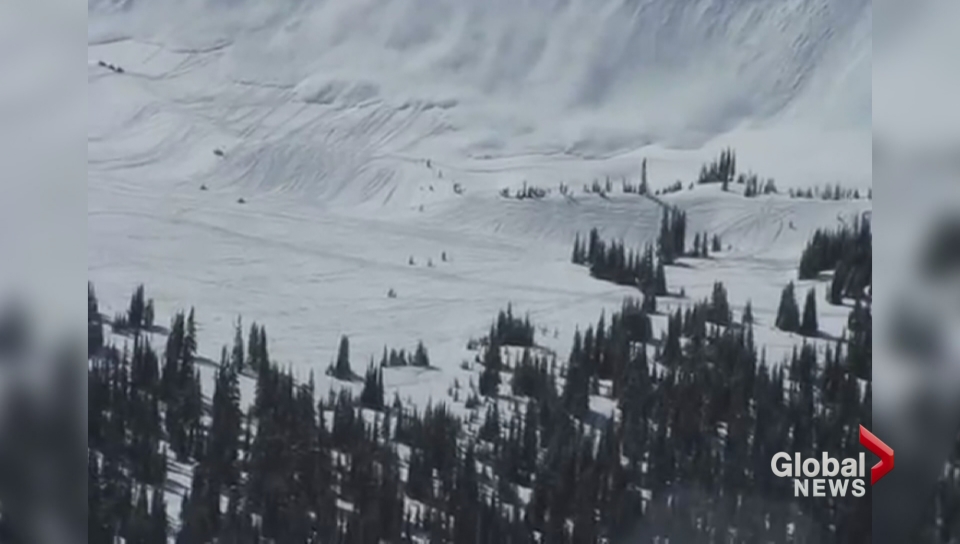Avalanche Canada is warning skiers and sledders that good intentions to help those in trouble may have tragic consequences, after a snowmobiler was killed in an avalanche near Valemount, B.C. on Friday.

In a post written Saturday, Avalanche Canada warning service field programs manager Ilya Storm wrote 90 to 95 per cent of avalanches that kill people are triggered by the person themselves or someone in their group.
“All three were caught, one was on the surface, one partially buried, and the person who lost their life was fully buried.”
READ MORE: What causes avalanches?
Avalanche forecaster Storm told Global News such avalanche deaths are high-impact events, both in terms of sadness for family and friends of victims—and also in terms of opportunities to learn.
“We see patterns with avalanche accidents and one of those patterns is when many people are caught,” he said, adding there are different ways that can happen. “So a snowmobile weighs 400 or more pounds, and when they’re stuck, it can take some time and some sweat to get it out.
“Our instincts might be to go and help out my buddy or if somebody’s stuck, [they think] ‘that’s their problem and I’m just going to keep riding,’” he said. “I don’t know which one this was….[but] three people were exposed to this hazard rather than one.”
Mounties received a report Friday of a man who had been caught in an avalanche while on a snowmobile in the area of Clemina Creek, a popular recreation site southeast of Valemount, a B.C. town west of Jasper National Park.
Robson Valley search and rescue manager Dale Mason told Global News Monday someone on scene activated a SPOT beacon, which sends a signal notifying authorities. The other two people involved rode out of the area uninjured, he said.
Due to avalanche conditions, officials weren’t able to send a helicopter crew from Jasper National Park to recover the body until Saturday, Dec. 31.
Watch below: Efforts were underway Dec. 31 to recover the body of a snowmobiler killed in a slide near Valemount, B.C. Global’s Kristen Robinson has more on what safety officials are saying.

Storm said his intention wasn’t to cast blame in writing Saturday’s post, but instead “to identify a recurring pattern and try to break the chain of events.”
He offered the following tips for people during the sledding season:
Riders:
- If you’re in avalanche terrain and stuck, expect to dig and get yourself out—by yourself.
- Recognize there are better or worse times—and places—to get stuck.
“I like it when I anticipate and avoid a dangerous situation before it actually happens,” he wrote.
Group members:
- Watch from safe spot off to the side and well back, out of harm’s way.
- Give the rider time to sort it out by themselves: 10 minutes? 15 minutes? Longer?
- Plan how to help the rider if required: send in only one person and keep spotters watching – they’re the potential future rescuers; consider how to approach (from below or the side, not from above, avoid steepest terrain, avoid likely trigger points, manage terrain traps, etc.)
Spectators:
- Sledding is a social sport with big groups, many groups riding the same areas and the ability to cover a huge amount of terrain in a short time. People shouldn’t ride the same or closely connected slopes when someone’s stuck, regardless of whether they’re part of your group or not.
“The past is behind us and there’s no undoing yesterday’s accident and today’s sadness; only time will help with that,” Storm wrote. “But how do we build situational awareness and develop practices that can help prevent something similar from happening tomorrow?”
Storm invited people to send their thoughts on his question to istorm@avalanche.ca.
With a file from Jon Azpiri


Comments